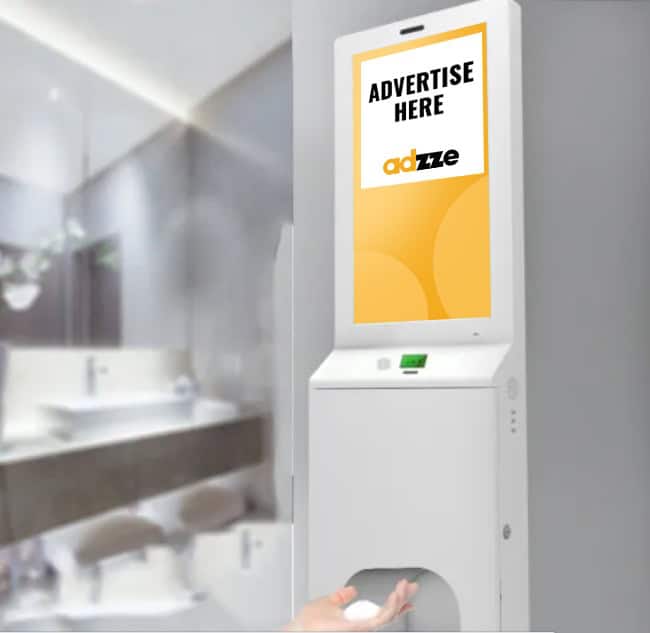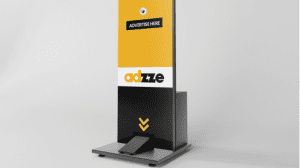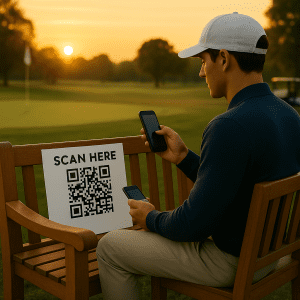In the wake of the COVID-19 pandemic, public health awareness has skyrocketed, and sanitizing stations have become a staple in high-traffic areas. As brands look for innovative ways to connect with health-conscious consumers, Branded Sanitizing Kiosks have emerged as a powerful advertising tool. Beyond their immediate benefits, these kiosks can leave a lasting impression, fostering brand loyalty and trust in healthcare and beyond.
This blog delves into the long-term impact of branded sanitizing kiosks on brand loyalty, exploring their role in healthcare advertising, key benefits, and use cases that highlight their effectiveness.
Why Brand Loyalty Matters in Healthcare Advertising
Brand loyalty in healthcare isn’t just about repeat business; it’s about building trust and establishing a reputation for care and reliability. A brand that consistently demonstrates its commitment to public health earns the confidence of its consumers. Branded Sanitizing Kiosks align with this goal by visibly supporting health and hygiene, creating a direct connection between the brand and consumers’ well-being.
How Branded Sanitizing Kiosks Foster Brand Loyalty
1. Visible Commitment to Health and Safety 
When consumers see a sanitizing kiosk bearing a brand’s logo, it sends a clear message: this brand cares about public health. This visible commitment builds trust, especially in healthcare environments where hygiene is paramount.
2. High-Touch, High-Visibility Advertising
Sanitizing kiosks are placed in high-traffic areas such as hospitals, clinics, gyms, and shopping malls. Every interaction—whether someone uses the kiosk to sanitize their hands or simply notices it—reinforces brand recall.
3. Personalization and Emotional Connection
Customization options for branded sanitizing kiosks allow businesses to include personalized messages, colors, and designs that align with their identity. Emotional connections are further strengthened when messaging reflects care, empathy, and understanding of consumer needs.
4. Positive Associations
By associating a brand with cleanliness and health, businesses can tap into positive emotions and values. Consumers are more likely to feel good about a brand that visibly promotes hygiene and safety, fostering long-term loyalty.
Use Cases of Branded Sanitizing Kiosks
1. Hospitals and Healthcare Facilities
Example: A major pharmaceutical company installed branded sanitizing kiosks in hospital lobbies across urban areas. These kiosks displayed messages about flu prevention while dispensing hand sanitizer. The campaign not only boosted public awareness but also reinforced the company’s reputation as a health-focused brand.
Impact: Surveys showed a 35% increase in brand trust among healthcare professionals and patients after the campaign.
2. Gyms and Fitness Centers
Example: A fitness brand partnered with sanitizing kiosk providers to install branded units at gym entrances. These kiosks featured QR codes linking to fitness tips and special offers on membership renewals.
Impact: The campaign drove a 20% increase in gym membership renewals, highlighting the effectiveness of interactive advertising combined with hygiene promotion.
3. Retail and Grocery Stores
Example: A grocery chain used branded sanitizing kiosks in-store to promote its organic produce line. The kiosks displayed videos about sustainable farming practices and offered discount codes for organic products.
Impact: The chain saw a 25% boost in sales of organic products during the campaign period and improved customer perceptions of its commitment to sustainability.
4. Educational Institutions
Example: A health insurance provider placed branded sanitizing kiosks in universities to promote student health plans. The kiosks included posters highlighting the benefits of the plan and QR codes for instant sign-ups.
Impact: Over 10,000 students enrolled in the health plan within three months, showcasing the potential of targeted advertising in high-traffic locations.
5. Airports and Transportation Hubs
Example: An airline partnered with branded sanitizing kiosks to promote its new hygiene measures. Located at security checkpoints, the kiosks displayed ads about the airline’s clean travel initiatives.
Impact: Passenger surveys revealed a 40% increase in trust and willingness to book flights with the airline after interacting with the kiosks.
Key Benefits of Branded Sanitizing Kiosks for Long-Term Loyalty
1. Enhanced Brand Recall
Repetition is key to brand recall. Placing sanitizing kiosks in areas where people frequently pass through ensures the brand remains top-of-mind.
 2. Tangible Consumer Interaction
2. Tangible Consumer Interaction
Unlike digital ads, sanitizing kiosks provide a physical interaction with the brand, creating a stronger and more memorable connection.
3. Data-Driven Insights
Modern kiosks equipped with sensors and QR codes can collect data on user behavior. This data provides insights into consumer preferences, allowing for more tailored future campaigns.
4. Aligning with Consumer Values
Consumers increasingly expect brands to demonstrate social responsibility. Sanitizing kiosks fulfill this expectation by showing a commitment to public health, resonating with socially conscious audiences.
Challenges and Considerations
While branded sanitizing kiosks offer numerous benefits, they are not without challenges:
Initial Costs: The upfront investment in kiosks and branding can be high, especially for small businesses.
Placement Logistics: Identifying high-traffic and high-relevance areas for kiosk placement requires thorough planning.
Maintenance: Keeping the kiosks clean, functional, and stocked with sanitizer is essential to maintain a positive brand image.
Best Practices for Implementing Branded Sanitizing Kiosks
Strategic Placement: Ensure kiosks are placed in locations where hygiene is a priority and foot traffic is high.
Customization: Use colors, logos, and messages that align with your brand identity.
Interactive Features: Include QR codes, touchscreens, or other interactive elements to drive engagement.
Consistent Messaging: Reinforce health-focused messaging that reflects your brand’s commitment to safety and well-being.
Measure Results: Use analytics to track engagement and adapt strategies based on performance.



 2. Tangible Consumer Interaction
2. Tangible Consumer Interaction



